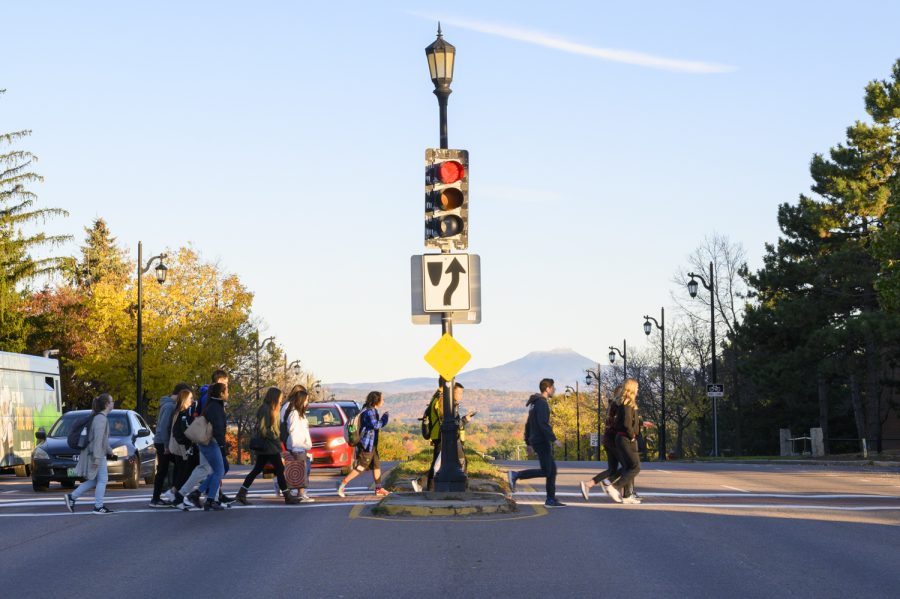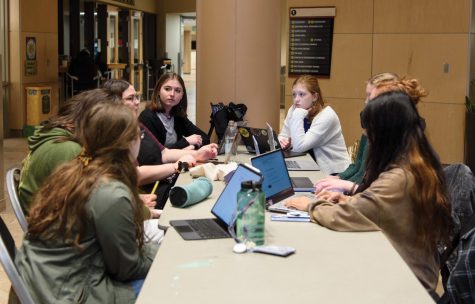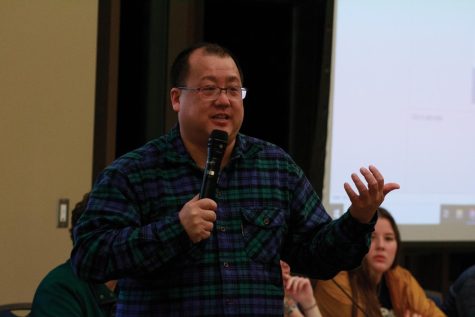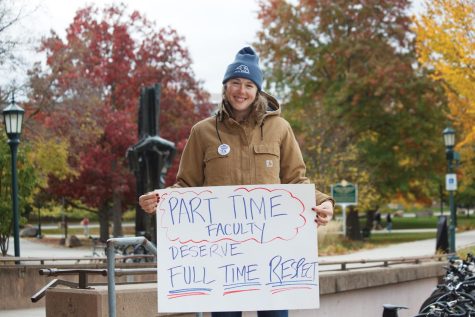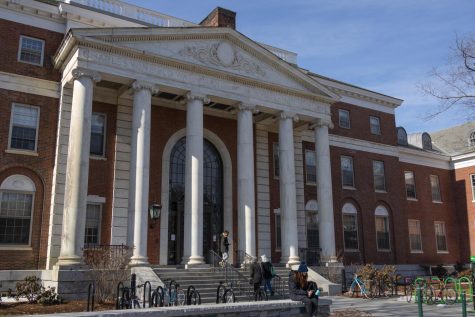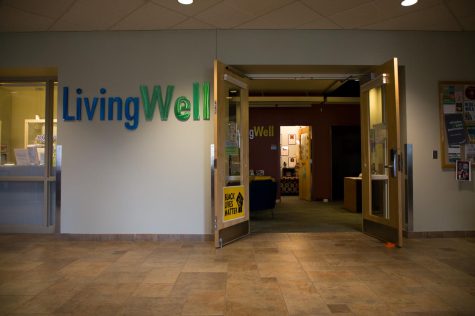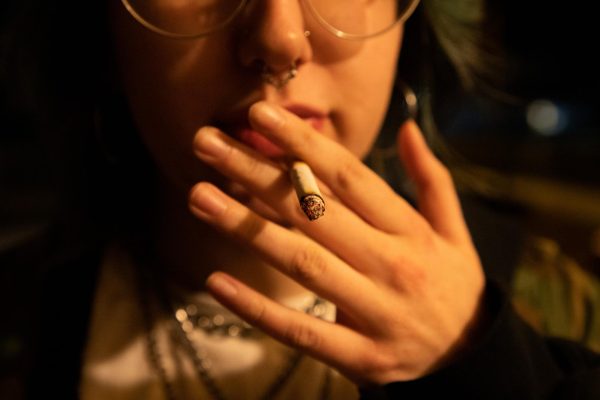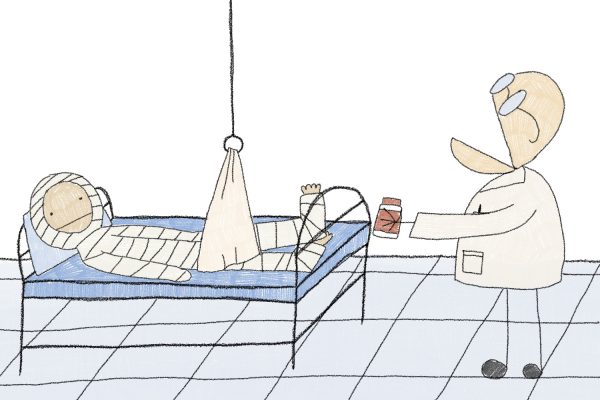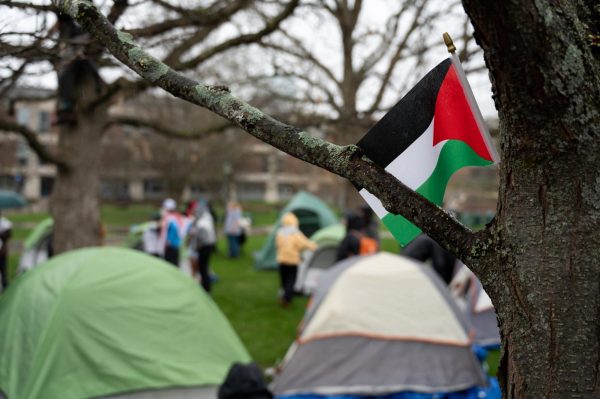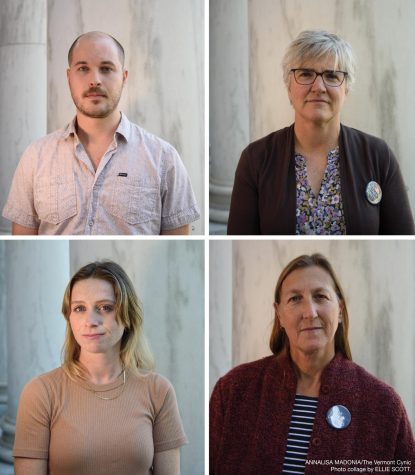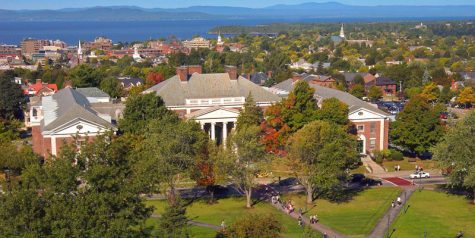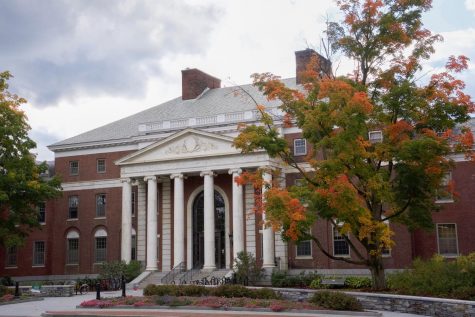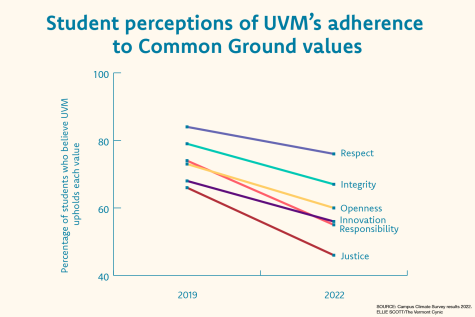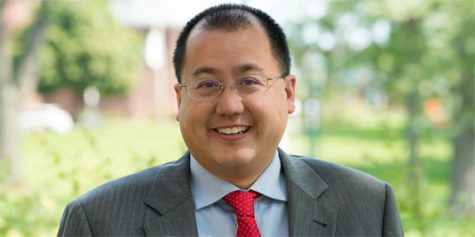Student safety concerns go unaddressed
Here’s what the city of Burlington and UVM are doing to address safety concerns at the U-Heights, Main Street intersection.
Pedestrians cross Main Street at the corner of University Heights, Oct. 19. The intersection is among the busiest in Vermont.
An intersection deemed unsafe by students, UVM and the city of Burlington still has no definite plan or budget to be fixed despite concerns dating back to the 1960s.
Thirty thousand cars per day and 1,300 pedestrians per hour pass through the University Heights-Main Street intersection according to a preliminary report provided by Burlington.
SGA, UVM and Burlington Department of Public Works officials met Oct. 16 in a UVM conference room to discuss preliminary solutions and results from a safety study conducted by the city, said sophomore Aidan May, an SGA senator.
This is not the first time a study has been conducted to gather data about the intersection, said Chapin Spencer, director of public works.
However, no definite plan, timeline or budget has been established to address the safety concerns, said Jim Barr, director of UVM transportation and parking services.
“There are a lot of moving parts, and we want to do it right,’’ Barr said. “It is getting more expensive to do these things.”
According to the preliminary report, some ideas to improve the intersection include increasing traffic light length, incentivizing use of other crosswalks and infrastructural changes.
A 12-hour study was conducted last spring by UVM students to assess the intersection.
The study was part of a class taught by Richard Watts, director for the Center for Research on Vermont.
Students, like senior Zack Flaherty, deemed it unsafe, Flaherty said.
“I think the safety of the intersection is definitely lacking,” Flaherty said. “I regularly see both pedestrians and vehicles not following rules of the road.”
The class found the intersection to be a “high crash” location and aimed to draw attention to the serious concern for student safety, Watts said.
“People run red lights because they’re frustrated,” Watts said. “Lengthening the timing of the lights…makes it safer for us pedestrians but slower for cars.”
As a result of the student study, the class suggested all the lights turn red at the same time to allow pedestrians to use the whole intersection to walk.
May, Barr and Spencer said that changing the intersection, whether through adding crosswalks, widening existing ones or changing the timing of lights, has the potential for serious congestion downtown.
Public input will be sought in November or December, Spencer said.
A look at the engineer working on the intersection
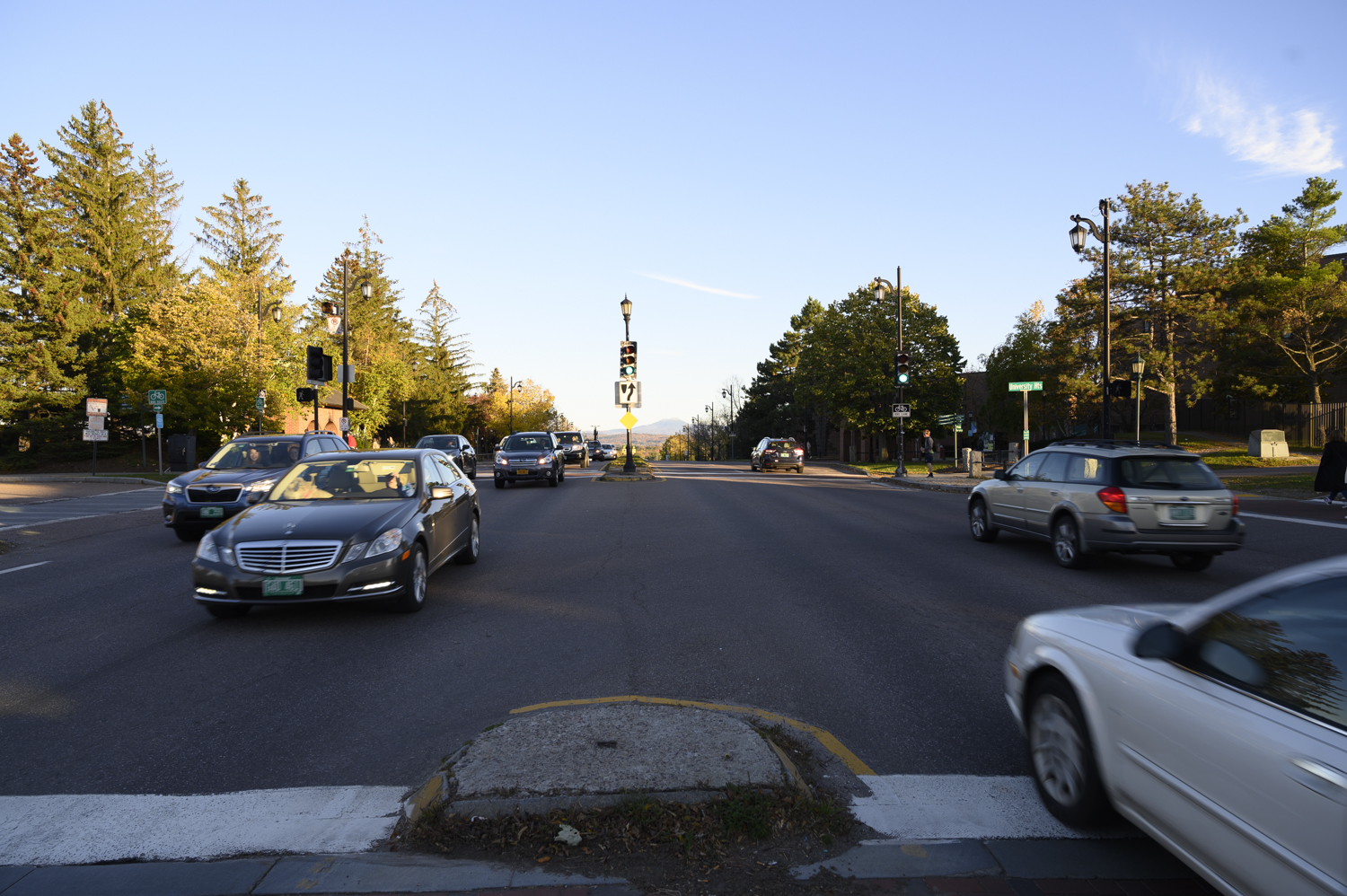
Burlington’s lead engineer on the University Heights-Main Street project is the same person who led a recent street upgrade program that cost the city millions.
The engineer, Laura Wheelock, was the chief engineer on the city’s “Great Streets” project which cost $4.9 million.
Wheelock did not respond to multiple requests for comment.
The project focused on improving pedestrian access and city infrastructure along St. Paul Street in downtown Burlington, according to the project’s website.
The city started work on St. Paul Street Aug. 25, 2018. The project was not completed until more than a year later in early September 2019.
However, Burlington’s DPW announced that work would again be needed to address complaints from drivers, according to a Sept. 17 press release.
“Following careful evaluation by our engineers and project designers, we are proposing modest, but impactful changes to widen the reconfigured geometry of this intersection (focused on the southern crossing) and to ‘chamfer’ the granite curb to make it less sharp,” the release stated.
Student journalists barred from meeting regarding intersection updates
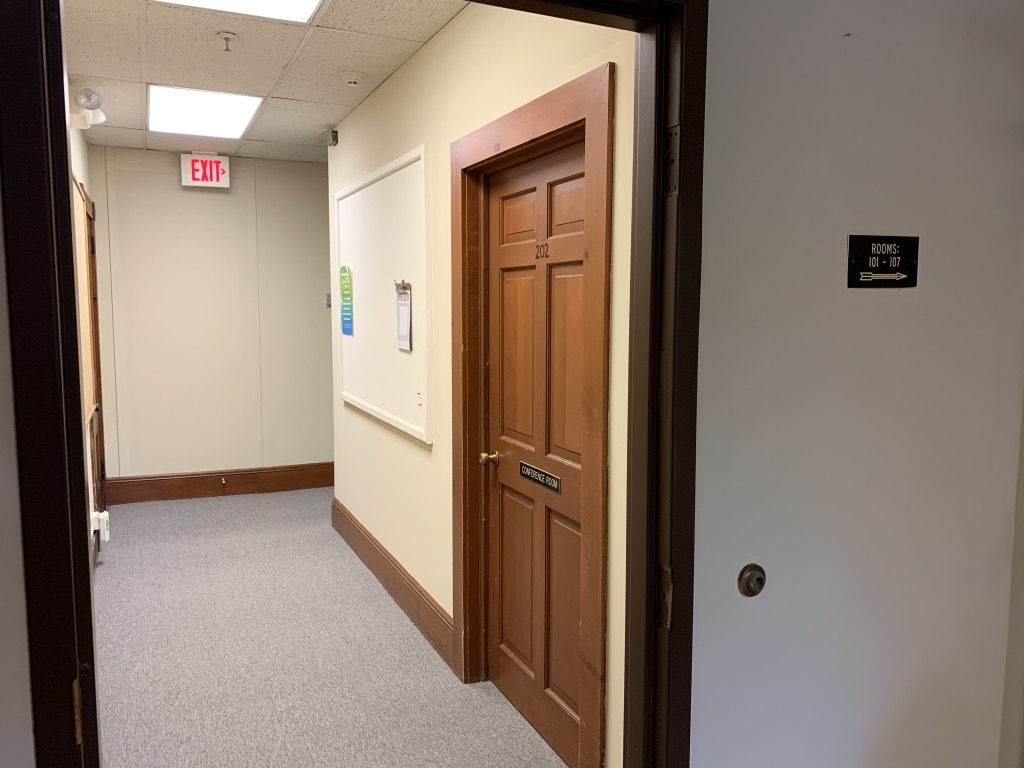
Behind this door, Burlington and UVM officials met to discuss proposal for an intersection a student research group deemed unsafe. Student Journalists were barred from that meeting.
Two student journalists were barred from attending a meeting between Burlington public works officials, UVM officials and SGA representatives, Oct. 16.
The Cynic, along with a student journalist in the developing community news service, were told by UVM and Department of Public Works officials that they were not allowed in the meeting.
The meeting was held in a UVM conference room. Its purpose was to give an update on what the city plans to do to address concerns with the University Heights-Main Street intersection that students in the spring called unsafe.
Prior to the meeting, Joe Speidel, director of local government and community relations for UVM, told the Cynic in a phone call that members in the meeting would prefer the Cynic not attend.
When the Cynic attempted to enter the meeting, they were barred by Speidel, who left the reporter standing in the hallway.
When asked whose decision it was to exclude journalists from the meeting, Speidel did not answer the question.
“Does it really matter?” he said.
Sophomore Aidan May, an SGA senator at the meeting, said the thought behind not letting student journalists in was due to the meeting being just preliminary.
“It was just a preliminary meeting and the rationale was that the officials did not want to be held to ideas just because they were reported on,” he said.
DPW spokesperson Rob Goulding said the department did not view the meeting as an “open meeting.”
“This meeting was a presentation of preliminary findings by the City to a working group that included University members, not a public meeting,” he said.
SGA President Jillian Scannell, a senior, said in a statement to the Cynic the removal of student journalists was upsetting.
“I, unfortunately, couldn’t make today’s meeting but was upset to hear that student reporters were removed,” the message stated.
Richard Watts, the lecturer for Vermont Media & Politics, where the original student data and demand for change came from, also sat in on the meeting. Watts stated in an Oct. 16 email he was disappointed that student journalists were not welcome.
“In general, it is always better to side with more transparency rather than less,” the email stated.
Mike Donoghue, a longtime First Amendment and transparency advocate, said the government-imposed news blackout is disappointing, but not a surprise, with UVM and the city of Burlington hiding behind closed doors.
“Both UVM and the city of Burlington, including the public works department have histories of not being transparent,” said Donoghue, first vice president of the New England First Amendment Coalition and executive director of the Vermont Press Association.
“Students and taxpayers would like to think the new UVM president and the Burlington mayor would want their public staff to side in favor of open and free discussion when talking about keeping students and pedestrians safe,” he said.
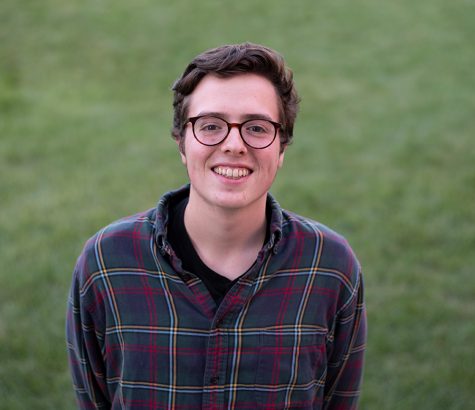
Sawyer Loftus is the News Editor for the Vermont Cynic. He is a junior History major with a passion for News. This past summer he was an intern in the...


